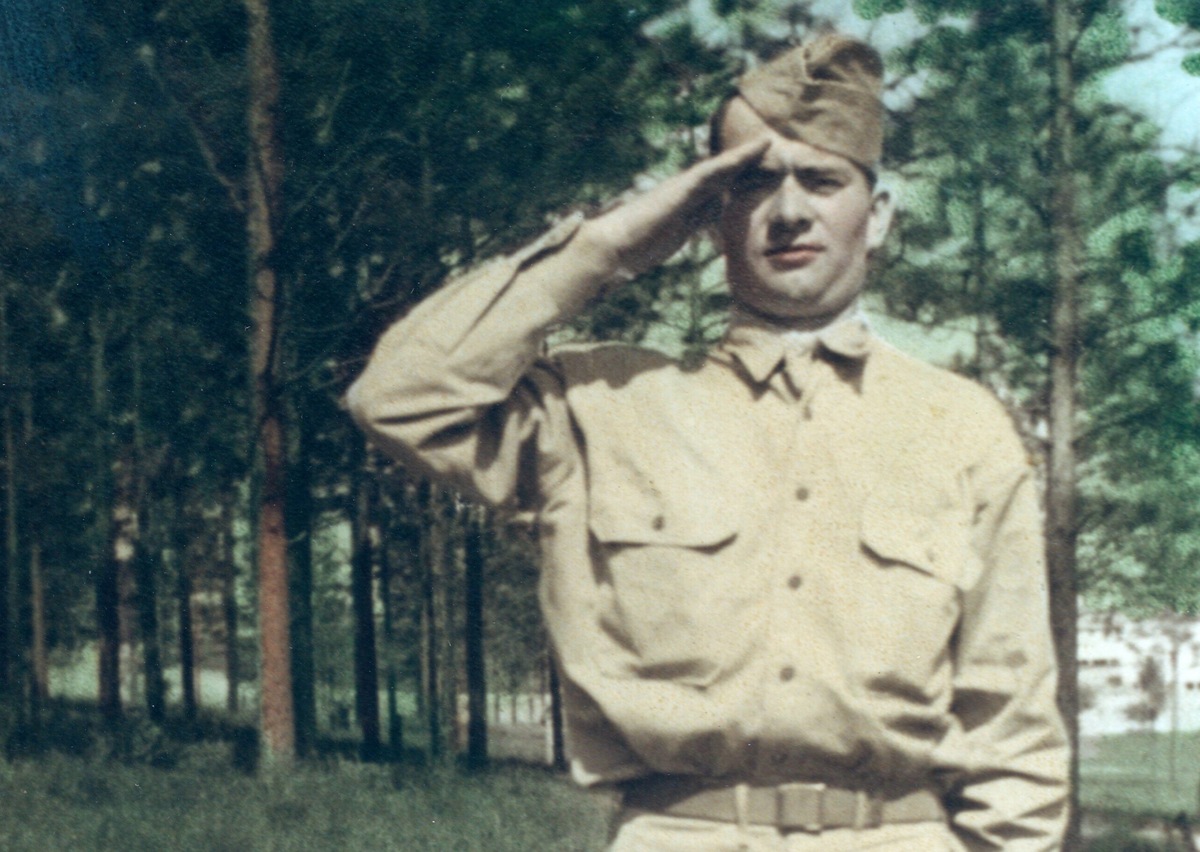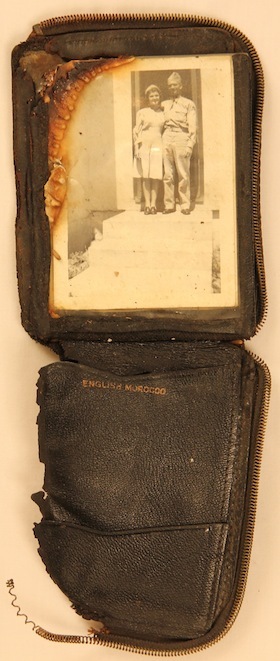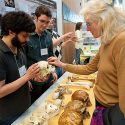Long lost WWII soldier returned to family with help of UW-Madison scientists

This picture shows Pfc. Lawrence S. Gordon in uniform and snapping off a crisp salute.
No longer missing, Pfc. Lawrence S. Gordon is finally on his way home.
On Aug. 13, exactly 70 years after the Canadian-born U.S. soldier died in a firefight as Allied forces chased Germans through Normandy, Gordon will be laid to rest in his hometown of Eastend, Saskatchewan.
Before he reaches Eastend, however, Gordon will make a stopover Wednesday, June 11 in Madison, where researchers from the University of Wisconsin–Madison will try to give Gordon’s descendants more insight into the mystery that began when the 28-year-old was declared missing by the U.S. military.
Results from France’s national crime lab — confirmed by both UW–Madison and Virginia-based Bode Technology — indicate convincingly that the unidentifiable remains mislabeled in 1944 as those of an unnamed German soldier are, in fact, Gordon.
The results come after an investigation led by Jed Henry, a Middleton, Wis., man and grandson of Staff Sgt. David Henry, who served in the same unit with Gordon during World War II. Jed Henry’s research convinced German and French authorities that circumstantial evidence pointed to a body designated “X-3” and buried in the German cemetery at Mont d’Huisnes in France.
Genetic material volunteered by Gordon’s nieces and nephews were compared to samples from X-3. It was in the DNA found in mitochondria — cell structures that generate energy from oxygen and food — and passed down from mother to child that the French lab narrowed the potential identification by more than 99.5 percent.

This wallet is all the Gordon family received after Pfc. Lawrence S. Gordon went missing in France.
Less than half of one percent of people share a certain set of mitochondrial DNA markers that Gordon’s mother passed on to him and a sister — and which his sister in turn passed on to her children.
“The French worked on the teeth and bones, and the teeth gave them excellent matches for mitochondrial DNA,” says Joshua Hyman, director of the Biotechnology Center’s DNA Sequencing Facility and a member of the science team Henry drew together to help guide his investigation.
“That makes us 99.5 percent certain this soldier is not somebody else,” Hyman says. “But, given the slim chance somebody else with the same mitochondrial profile as Gordon’s nephews and nieces was in this place in France among the unidentified remains of this particular attack in 1944, you feel even more certain.”
It was more than enough to convince French and German authorities, and for Pfc. Gordon’s nephew and namesake, Lawrence R. Gordon, of Medicine Hat, Alberta.
The surviving Lawrence made the trip to France last week to the Brittany American Cemetery and Memorial to see a rosette placed next to his uncle’s name on the Wall of Missing. The rosette signifies a missing soldier’s remains have been identified.
Lawrence R. Gordon, Henry and the governments of France and Germany organized an international procession, attended by military honor guards, that began today (Tuesday, June 10) in Mont d’Huisnes in France.
Pfc. Gordon and his honor guard will arrive in Chicago Wednesday afternoon on a flight from Paris, proceeding with escort from the Illinois State Police and Illinois Patriot Guard Riders into Wisconsin at the Beloit Welcome Center. In Wisconsin, the Wisconsin State Patrol and Wisconsin Patriot Guard Riders will take over for escort to Madison.
Soldiers from the Wisconsin National Guard will receive Gordon’s remains at UW Hospital in Madison.
At UW Hospital, forensic anthropologist Leslie Eisenberg, a fellow of the UW–Madison Anthropology Department, and forensic odontologist Donald Simley will examine Gordon to determine the extent of the remains and their condition.
“After all this time, the Gordon family still knows very little about what happened to Lawrence,” says Charles Konsitzke, associate director UW–Madison’s Biotechnology Center. “Any information this forensic exam can provide would mean a lot to them, even if it helps describe the way he lost his life.”
Gordon’s journey will end on Aug. 13 at Riverside Cemetery in Eastend, Saskatchewan, where his family will finally be able to lay him to rest.
“We’re very proud UW–Madison could be part of this process, and that we could show how next-generation DNA techniques can have an impact on identifying missing servicemen and benefit society,” Konsitzke says.

